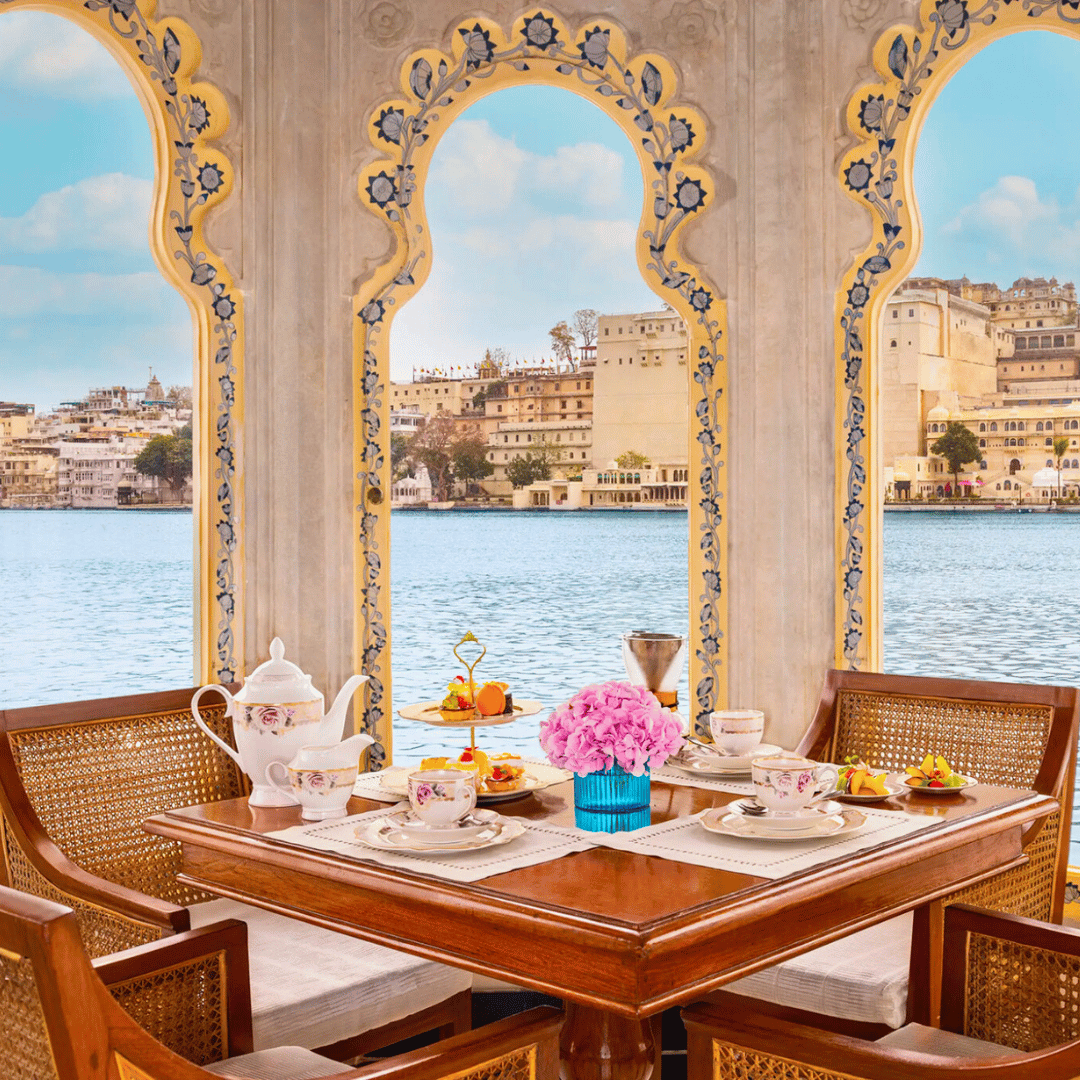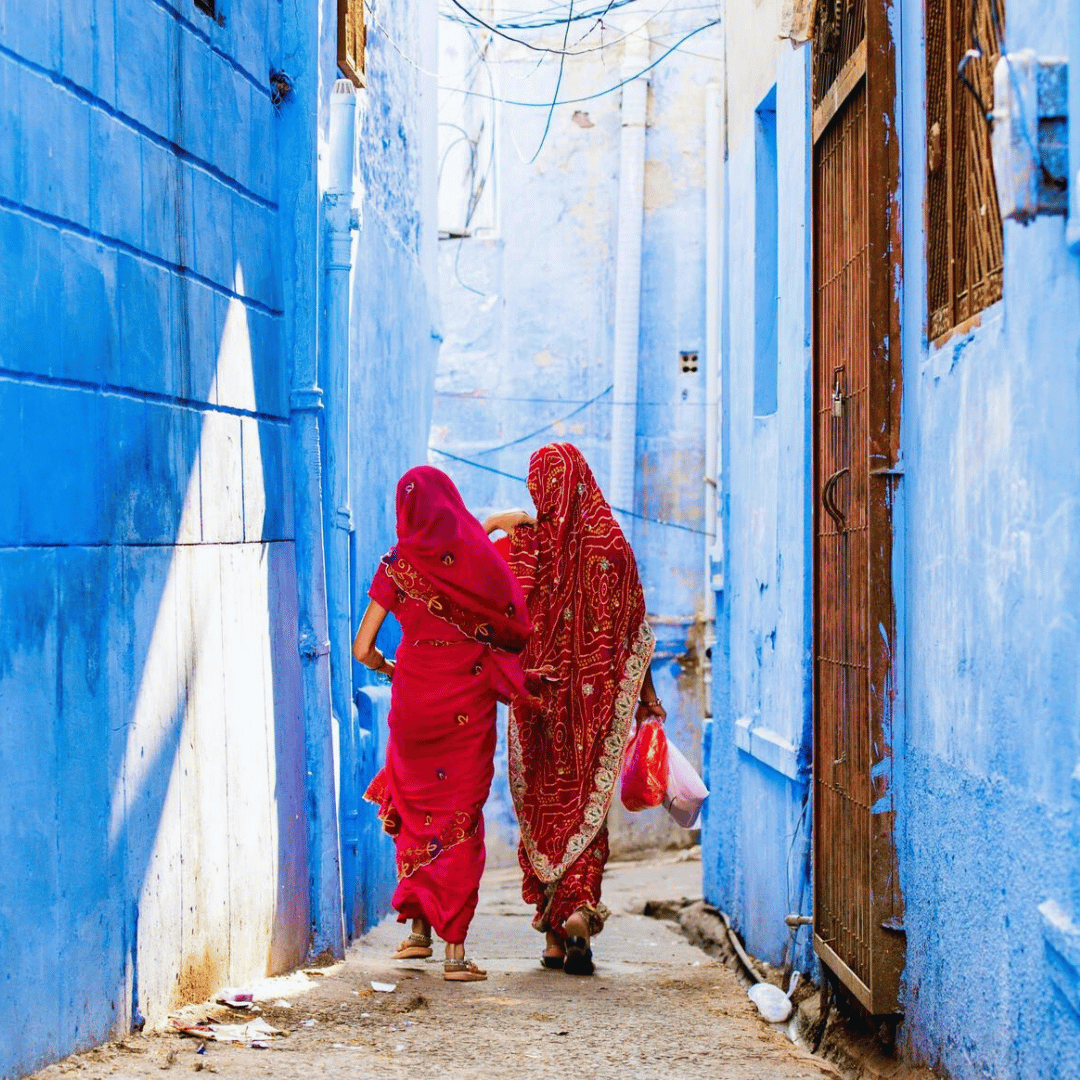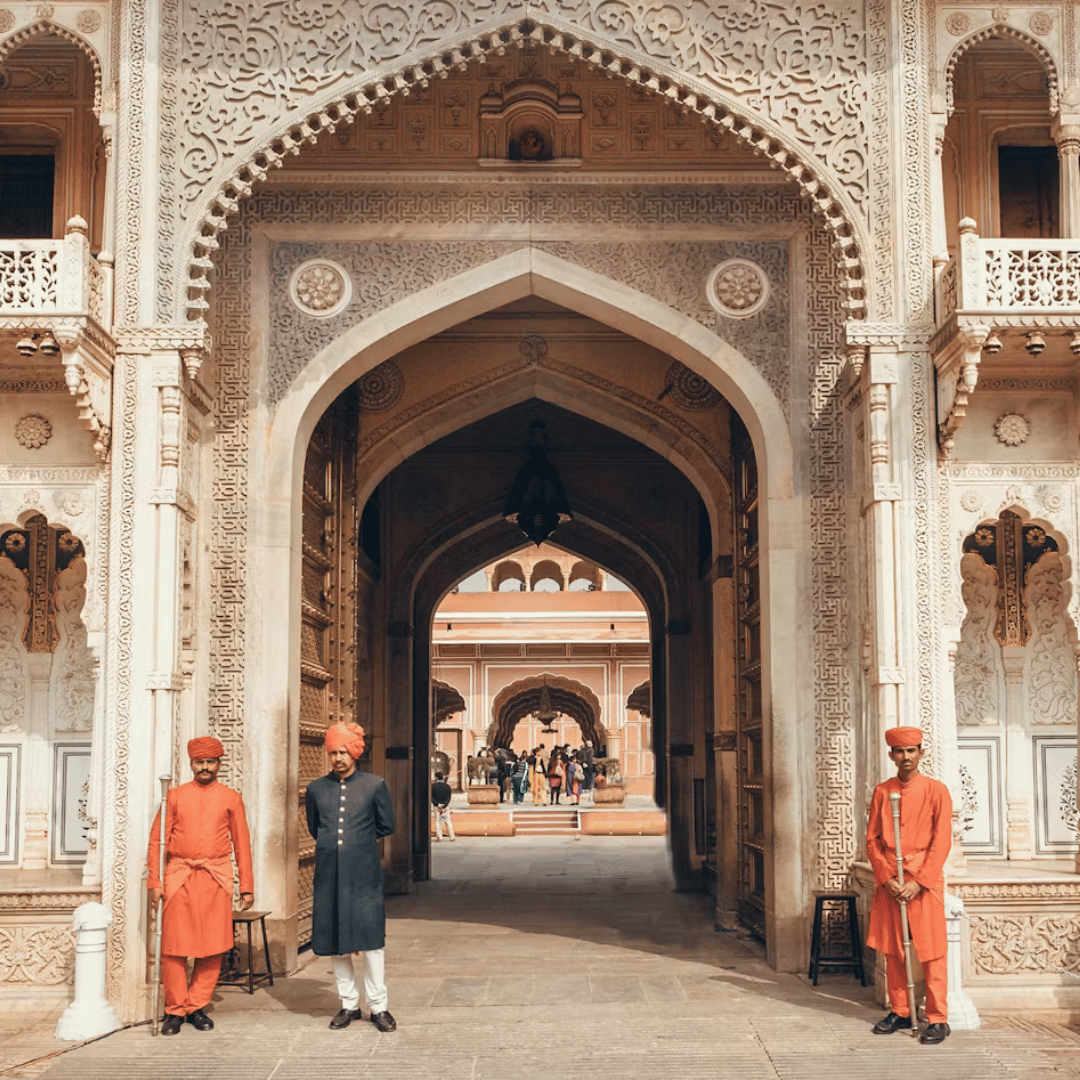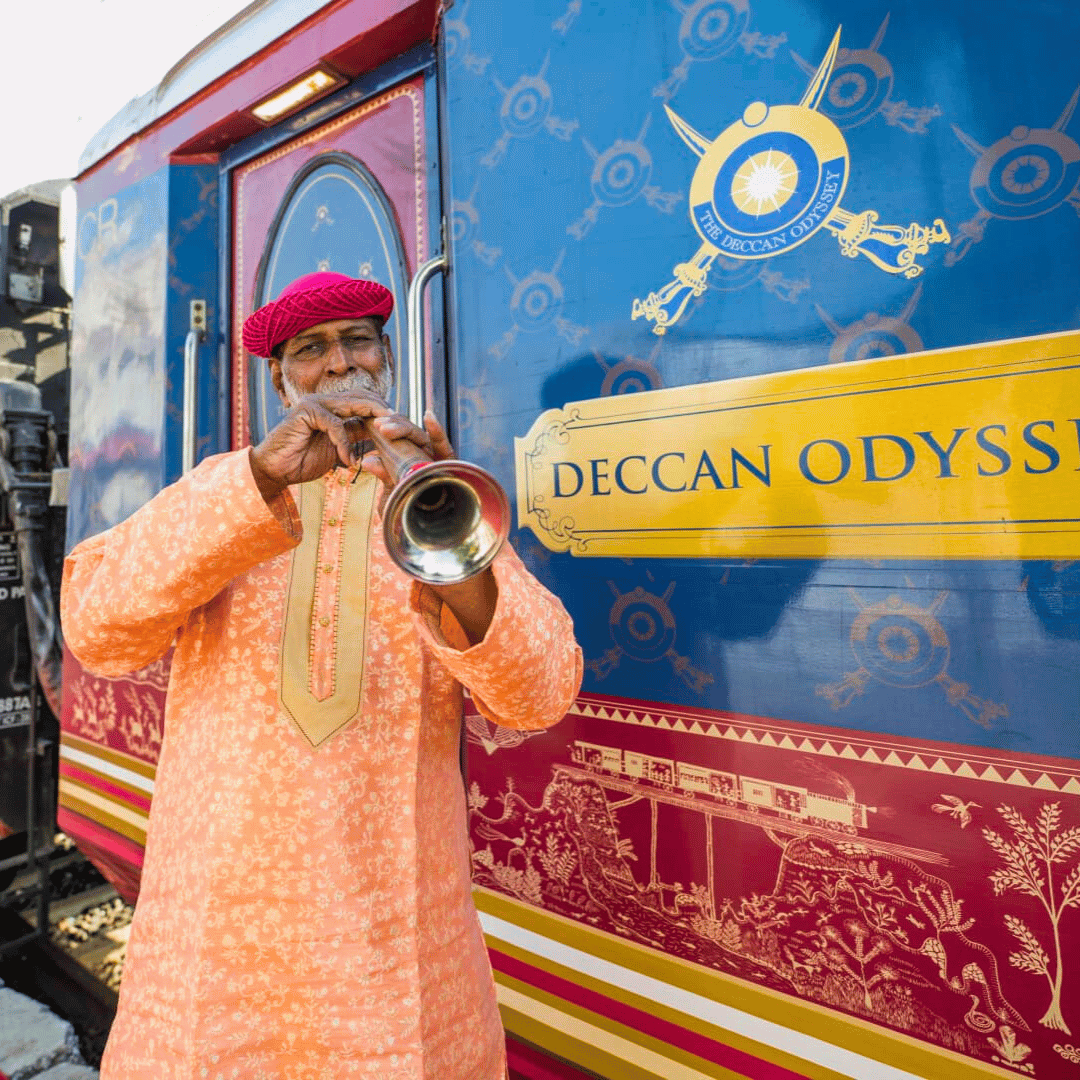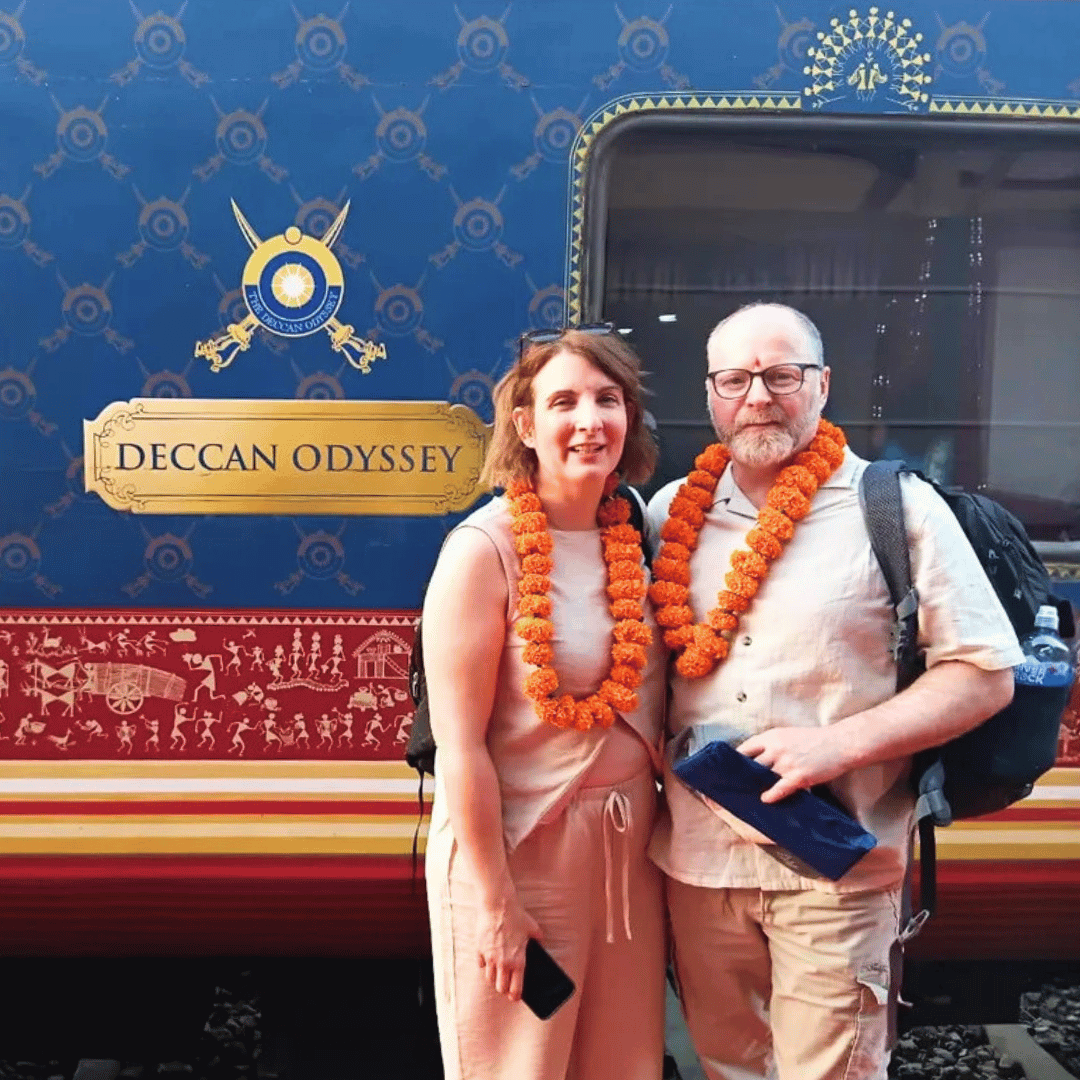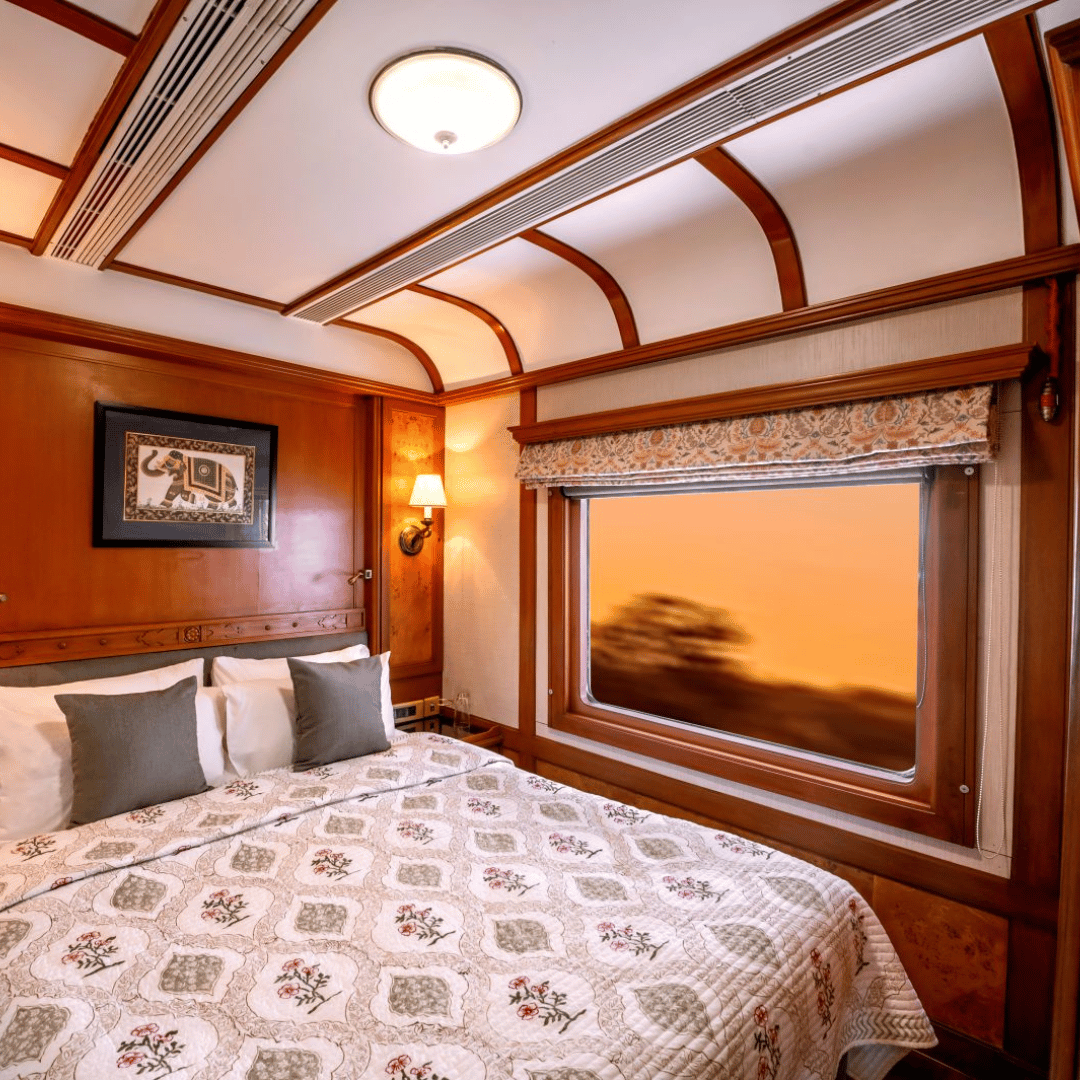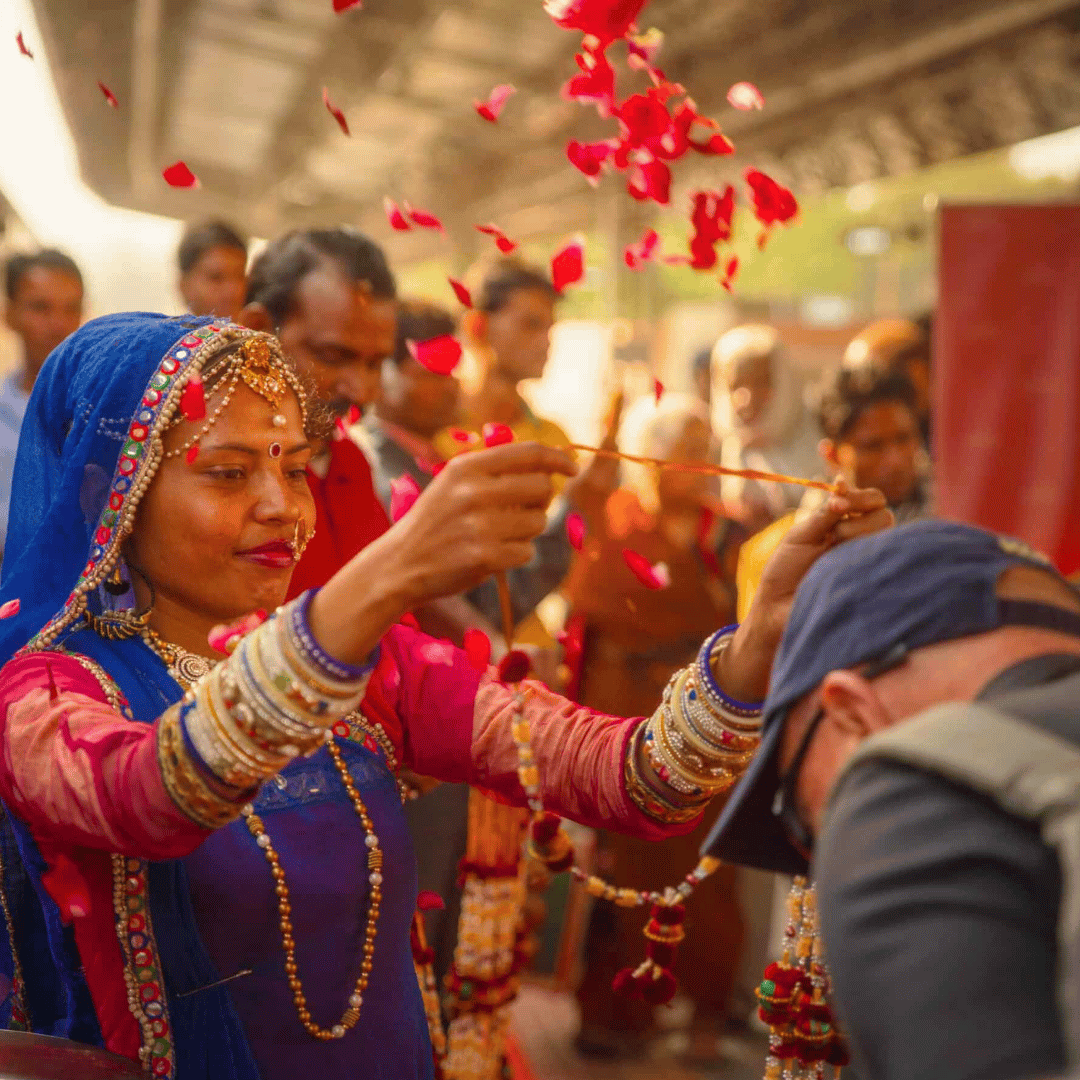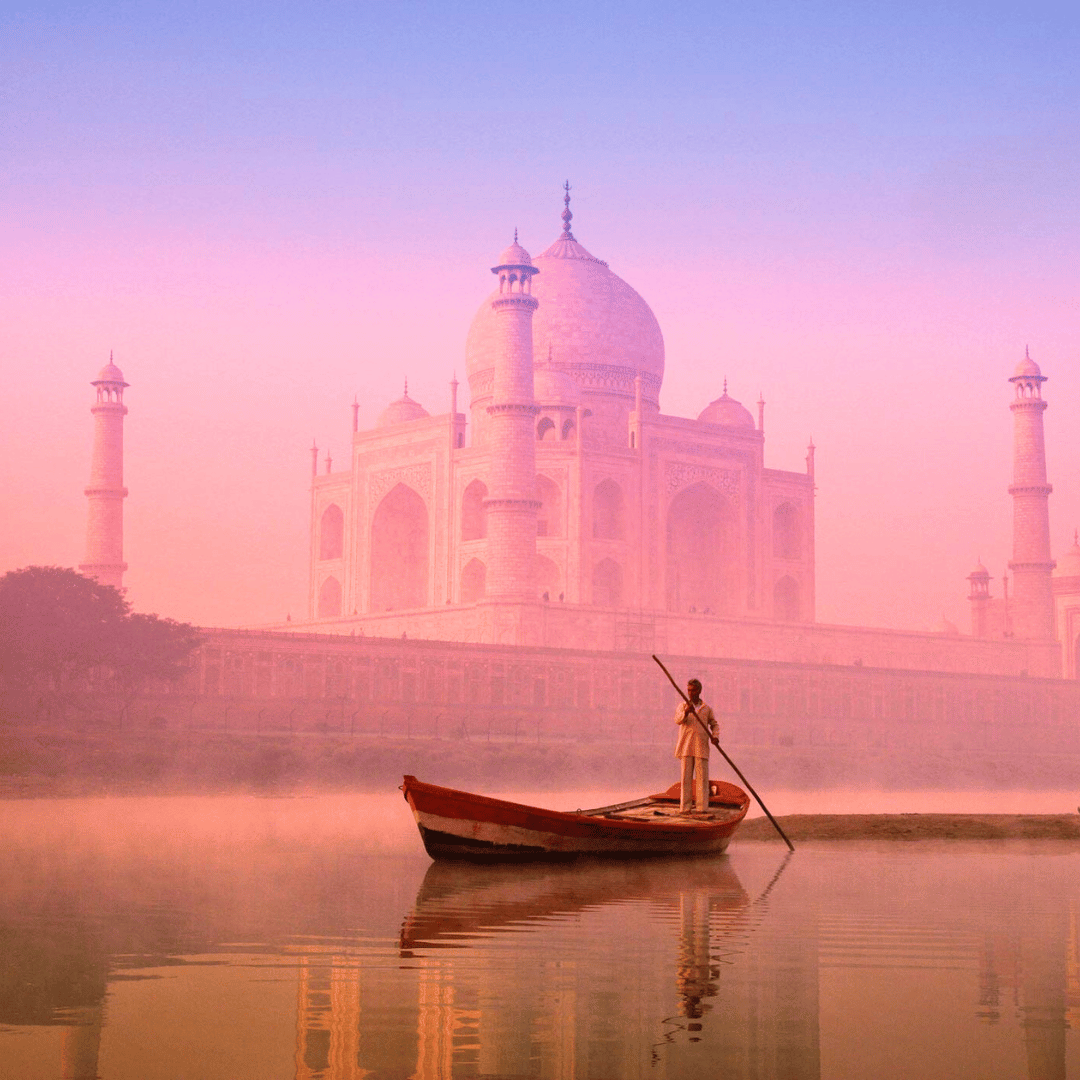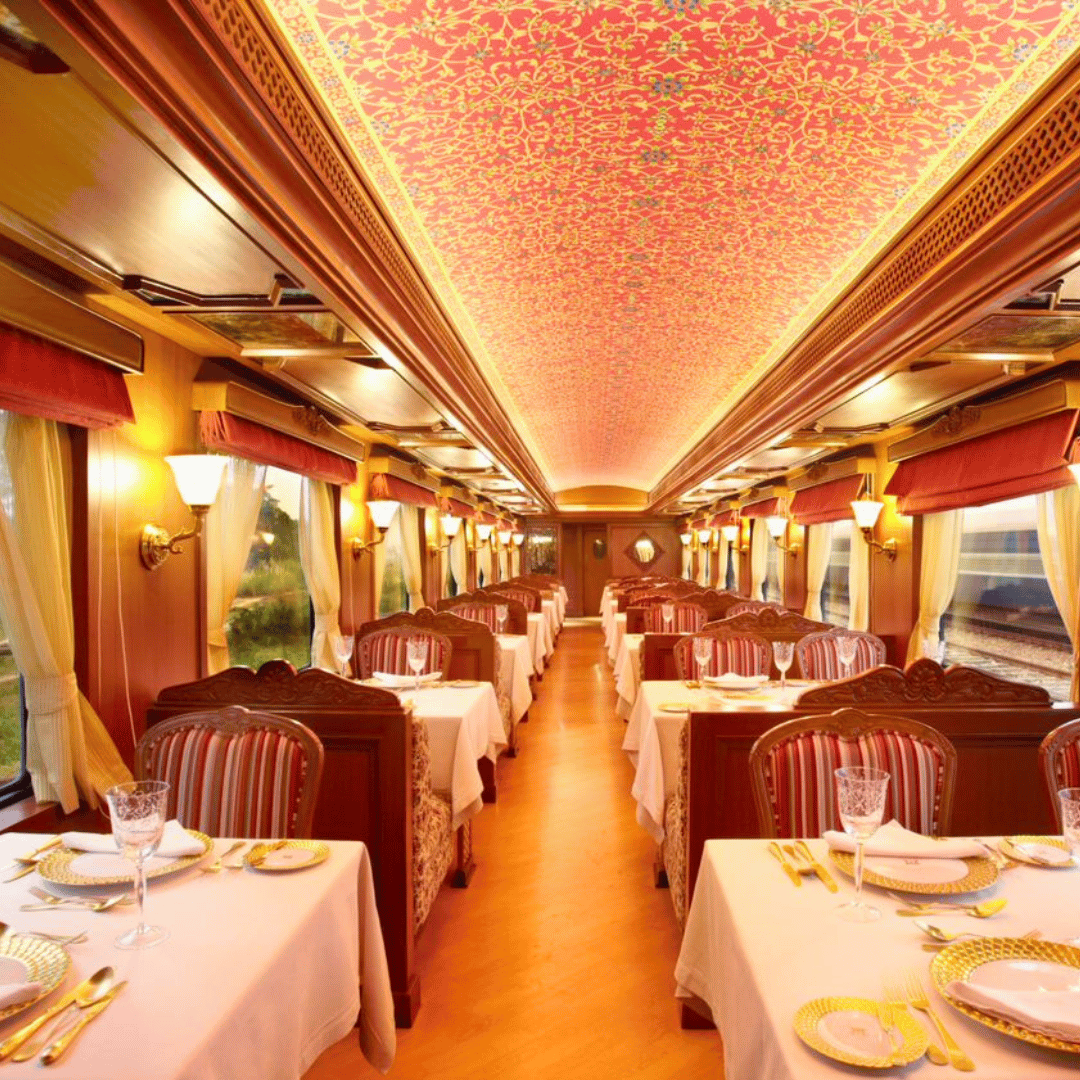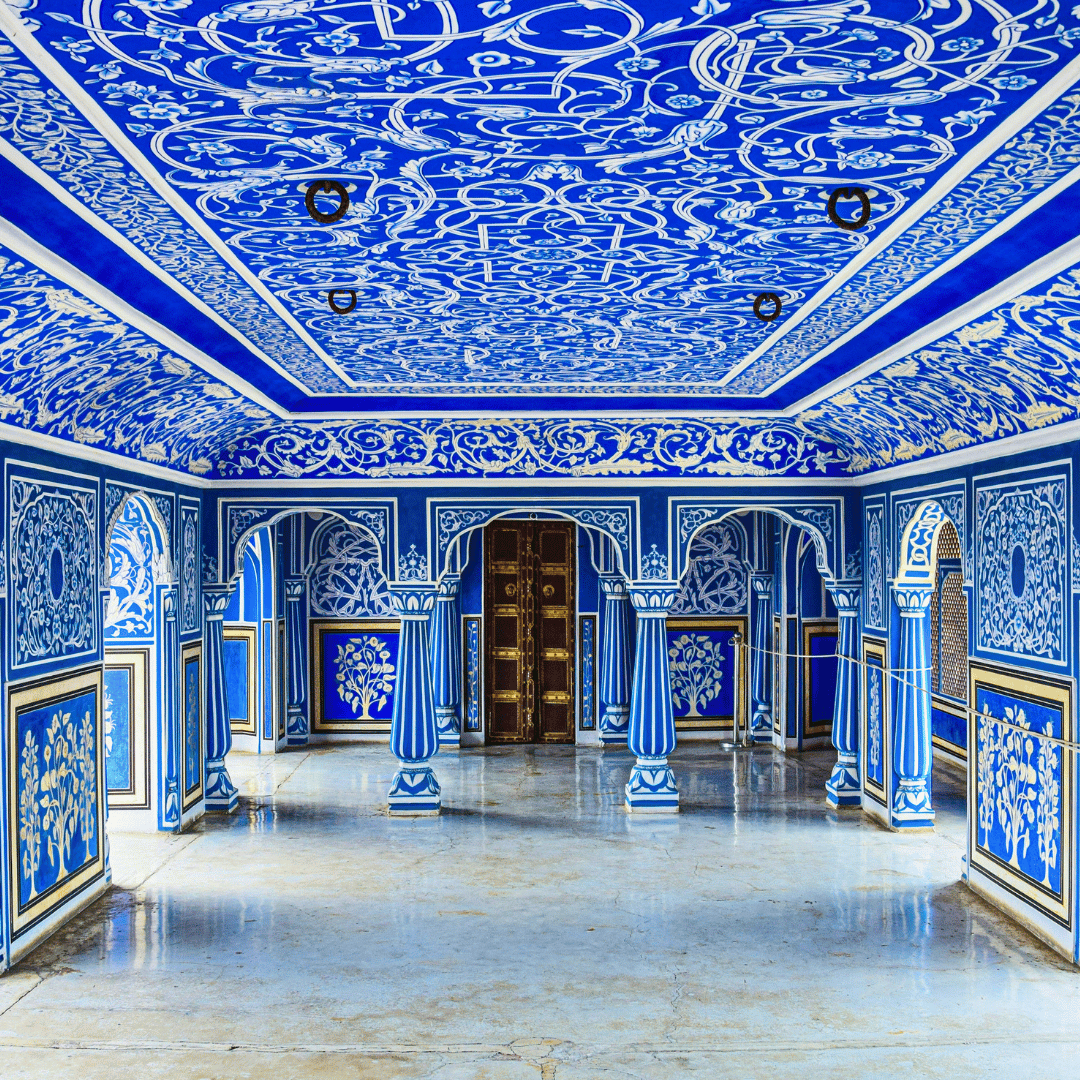Luxury Rajasthan Tour Itinerary
-
Welcome to India! A city of striking contrasts, Delhi is at once an ancient capital layered with history and a bustling, ever-evolving metropolis. It serves as both a gateway to India and a destination in its own right, offering a rich collection of experiences that reflect the country’s complex past and vibrant present. From Mughal monuments and colonial-era buildings to cutting-edge contemporary art spaces and innovative culinary ventures, Delhi presents a compelling mix of old and new. Explore the UNESCO-listed Qutub Minar complex, home to the oldest surviving Islamic structures in India, or wander through the lively lanes of Hauz Khas Village, where centuries-old ruins stand alongside galleries, cafés and design studios. Whether you're intrigued by the grand architecture of the past or the bold expressions of modern India, Delhi promises a captivating start to your journey.
Upon arrival, you’ll be met and transferred to your accommodation for the night: the landmark Imperial Hotel. Nestled in the heart of New Delhi, this storied hotel is one of the city’s finest heritage properties. A sweeping avenue lined with twenty-four towering king palms leads to its distinctive white façade, offering a sense of occasion on arrival. Built in 1931, the Imperial was conceived as part of British architect Edwin Lutyens’ master plan for New Delhi. Its design draws on a fusion of Victorian, Colonial and Art Deco influences, which continue throughout its grand interiors.
The hotel is not only architecturally significant, but also steeped in political and historical importance. In the 1930s and 40s, the Imperial hosted key discussions between prominent leaders such as Mahatma Gandhi, Jawaharlal Nehru, Muhammad Ali Jinnah and Lord Mountbatten - conversations that would ultimately shape the future of the Indian subcontinent. Staying at the Imperial is not merely about luxury: it is an opportunity to be surrounded by echoes of the past.
Inside, you’ll find soaring ceilings, polished marble floors, rich mahogany furniture, and glittering crystal chandeliers. The hotel’s extensive collection of colonial-era artworks - one of the largest in India - adds further depth to the experience, with works that depict British perspectives on Indian life in the 18th and 19th centuries. Offering gracious service and timeless charm, the Imperial Hotel is a fitting introduction to the elegance, complexity and historical richness of Delhi.
-
This morning begins with a visit to the impressive Jama Masjid, one of the grandest surviving structures of Mughal India. Commissioned by Emperor Shah Jahan in 1650, the mosque took six years to complete and involved over 6,000 skilled workers, including expert engineers, master craftsmen and renowned artisans. As the largest mosque in India, Jama Masjid remains a powerful expression of Mughal ambition and religious devotion.
Following the mosque visit, set out on a guided walking tour through the narrow, bustling laneways of Old Delhi. This part of the city is a maze of life, colour and commerce. You’ll wind through Kinari Bazaar, famed for its glittering displays of embroidered silk saris, wedding decorations and traditional trimmings. Then, move on to Khari Baoli, Asia’s largest spice market, where traders have dealt in fragrant spices, herbs and dried fruits for over 150 years. The sights, smells and sounds of this area are an experience in themselves, offering a glimpse into the day-to-day rhythms of Delhi’s historic trading hub.
In the afternoon, explore the landmarks of New Delhi, beginning with Humayun’s Tomb, one of the earliest examples of Mughal garden tomb architecture in India. Built in 1570, it inspired the later construction of the Taj Mahal. The tomb sits in a symmetrical Persian-style ‘Paradise Garden’, divided into four squares by walkways and intersected by water channels, echoing the four rivers of jannat, the Islamic notion of paradise.
You’ll then visit the Qutab Minar complex, located in the area that once formed Lalkot, the first of Delhi’s seven historic cities, founded by Rajput ruler Anang Pal in the 11th century. The complex includes the Qutab Minar, a soaring 73-metre victory tower begun in 1193, and the Quwwat-ul-Islam Mosque, one of the earliest surviving mosques in India, constructed using the remains of demolished Hindu temples. Also within the grounds is the famous iron pillar, which dates to the 4th century and still resists rust, bearing testament to the advanced metallurgical knowledge of ancient India.
As you drive past the grand boulevards of Lutyens’ Delhi, you’ll see the more formal, imperial side of the city, laid out during British rule. Designed between 1912 and 1931 by architects Edwin Lutyens and Herbert Baker, this area blends classical European architectural principles with Indian motifs, forming a spacious and orderly capital to reflect British authority at the time.
In the evening over dinner, you’ll enjoy an informal and engaging talk by a historian on the origins of the Rajputs - the warrior clans of Rajasthan - setting the stage for the next chapter of your journey through India.
-
This morning begins with a seamless transfer from your hotel to the airport, where you’ll board a private charter flight to Agra. Travelling by private plane not only reduces travel time but also allows you to avoid the congestion of road or rail travel, making for a relaxed and efficient start to the day. Agra, once the capital of the Mughal Empire, holds a significant place in India’s architectural and cultural history. Though the Mughal emperors ruled from various capitals, Agra was the heart of their empire during its golden age, and its monuments stand as enduring legacies of their vision, power and refinement.
On arrival, you’ll be met by a local guide and taken on a private tour of two of India’s most iconic landmarks. First, explore Agra Fort - a UNESCO World Heritage site - with its massive red sandstone ramparts enclosing a complex of palaces, audience halls, mosques and gardens. Built and modified over time by successive Mughal rulers, the fort offers a fascinating glimpse into courtly life, political intrigue and the empire’s changing fortunes. From its balconies, one can also view the distant outline of the Taj Mahal, your next stop.
The Taj Mahal needs little introduction, yet nothing prepares you for the impact of seeing it in person. Commissioned by Shah Jahan in 1632 as a mausoleum for his wife Mumtaz Mahal, the Taj’s graceful proportions, finely inlaid marble surfaces and changing hues throughout the day continue to captivate visitors. Your guide will provide context to the architectural symbolism, construction process and stories behind this iconic structure, giving deeper meaning to what is often considered the world’s greatest monument to love.
After the visit, you’ll return to the airport to board a short flight to Jaipur, arriving by afternoon. Jaipur, often referred to as Rajasthan’s “Pink City”, is named for the distinctive colour of its old city walls and buildings - a colour traditionally associated with hospitality. Founded in 1727 by Maharaja Sawai Jai Singh II, Jaipur was India’s first planned city, with broad avenues, grid-like layouts, and zones demarcated for specific trades and functions. The city remains one of the most atmospheric in India, where daily life continues in and around magnificent forts, grand palaces, and bustling markets.
On arrival, you’ll be transferred to your accommodation, the stately Rambagh Palace. Set amidst manicured lawns and ornamental gardens, Rambagh is one of India’s finest palace hotels. Built in 1835 for Kesar Badaran, a handmaiden of the queen, the structure evolved over time - first into a royal guesthouse and hunting lodge, then the official residence of the Maharaja of Jaipur. Since 1957, it has operated as a luxury hotel, welcoming discerning guests from around the world.
The palace blends Mughal and Rajput architectural elements, with intricately carved archways, expansive courtyards, and gleaming marble walkways. Inside, the rooms and suites are individually designed, with hand-painted motifs, antique furnishings, and elegant textiles reflecting the rich cultural heritage of Rajasthan. Regal four-poster beds, silk drapes, polished wooden floors and walk-in wardrobes create a sense of timeless elegance, while modern comforts are seamlessly integrated. Each room tells a story, and as a guest, you are invited into a world that once belonged to kings, queens and their distinguished visitors.
-
Your day in Jaipur begins with an early visit to the city's lively milk market, an experience that offers a rare and authentic insight into local life. Here, amid the bustle of vendors and buyers, you can witness the traditional, time-honoured methods of milk trading. Farmers arrive on scooters and carts with fresh milk in large metal containers, while traders assess the quality using simple but effective techniques, bargaining over volumes and prices in a ritual that has remained unchanged for generations. It's a window into the everyday rhythms of life in Rajasthan’s capital, far removed from the grandeur of palaces and forts.
Afterwards, embark on a guided sightseeing tour of Jaipur’s key historical landmarks, starting with the City Palace. Built between 1729 and 1732 by Maharaja Sawai Jai Singh II, and expanded by his successors well into the 20th century, the City Palace is a striking blend of Rajput, Mughal and European architectural styles. Set around a series of courtyards, gardens and buildings, the palace complex houses museums, ceremonial halls and royal apartments, many of which retain their original furnishings, paintings and decorative detail. Walking through the palace is like stepping into a chapter of Rajasthan’s regal history, full of grandeur and careful craftsmanship.
Next, visit the remarkable Jantar Mantar, a UNESCO World Heritage site and one of the best-preserved historic observatories in India. Built in the early 18th century by the scientifically-minded Sawai Jai Singh II, it features over twenty fixed instruments, some massive in scale, designed to observe celestial movements with the naked eye. The structures are both scientific tools and architectural curiosities, reflecting the fusion of art, astronomy and geometry that characterised Jaipur’s founding era.
Nearby is the Hawa Mahal, or Palace of Winds, one of Jaipur’s most recognisable landmarks. This five-storey façade of red and pink sandstone was built in 1799 to allow royal women to observe street processions without being seen. Its most distinctive feature is its lattice of 953 small windows, or jharokhas, which allowed cool air to circulate through the building during the hot months. The Hawa Mahal is both functional and visually striking, representing the ornate delicacy of Rajasthani design.
In the afternoon, you’ll head just outside the city to Sanganer, a small town renowned for its traditional crafts. This is one of Rajasthan’s most important centres for hand-printed textiles and handmade paper. The town’s paper-making industry dates back to 1728, during the rule of Sawai Jai Singh II, and continues to produce high-quality paper using age-old techniques. Sanganer is equally celebrated for its distinctive hand-block printing, characterised by small floral motifs printed on white fabric using natural dyes and intricate wooden blocks.
Stroll through the Kagazi Mohalla, the paper-makers’ quarter, where you’ll meet artisans who are among the last in their lineage to practise these traditional techniques. Watch as fabric is stretched, printed and dried in vibrant sheets near the riverside, creating a kaleidoscope of colour and activity. A hands-on workshop will be arranged for you to try your hand at block printing under the guidance of local craftspeople. Engaging with these artists gives you a deeper appreciation of their skill and the cultural significance of their work, which has been handed down through generations and remains deeply tied to Rajasthan’s artisanal heritage.
-
This morning begins with a privately guided walking tour through the heart of Old Jaipur. Unlike a visit to a museum, this walk offers an immersive look at the city’s living heritage, where age-old skills and traditions continue to thrive. From the time of Jaipur’s founding in 1727, the royal court and noble families actively supported a range of skilled artisans - jewellers, potters, weavers and metalworkers - whose descendants still practise their crafts today. As you weave through the narrow laneways and bustling bazaars, you’ll pass colourful stalls overflowing with gemstones, silver jewellery, lacquer bangles, hand-block printed textiles and Jaipur’s distinctive blue pottery. This is a wonderful opportunity to engage with local artisans, learn about traditional techniques, and if you're inclined, try your hand at a bit of bargaining.
From the city centre, you’ll be driven to the outskirts of Jaipur to visit the iconic Amber Fort, perched dramatically on a hillside and offering sweeping views of the surrounding countryside. Originally established in 1592 by Raja Man Singh I and later expanded by Jai Singh I, the fort served as the royal residence of the Kachwaha rulers before Jaipur was founded. Though its exterior walls appear austere and forbidding, inside you’ll find a series of richly decorated halls and courtyards that showcase the opulence of the Mughal-Rajput style. Highlights include the Diwan-i-Am (Hall of Public Audience), where the maharaja would hear petitions from his subjects, and the Diwan-i-Khas (Hall of Private Audience), reserved for high-ranking officials. The Jas Mandir (Hall of Glory), Sukh Nivas (Hall of Pleasure) and the famed Shish Mahal (Hall of Mirrors) - with its glittering mosaic of mirror work - further reveal the refinement and artistry of the period.
After exploring the fort, your journey continues a short distance into the rugged countryside behind the fortress to reach Dera Amer, a peaceful retreat surrounded by reserved forestland. Far removed from the noise and bustle of the city, this area is home to scattered village communities and abundant wildlife. Here, a Rajput family hosts intimate cultural experiences on their private estate, which has long been associated with the care of elephants and conservation of the natural environment.
Spend the afternoon at the Dera Amer Camp, where you’ll watch an informal elephant polo match. The sheer scale of the elephants, combined with their slow but purposeful movement, makes the game both humorous and mesmerising to watch. Unlike the speed of traditional polo, this version is defined by a certain grandeur and grace. Set against a rural backdrop and hosted in a relaxed, friendly atmosphere, it’s a rare chance to experience a whimsical royal pastime in a setting that feels personal and off the beaten track.
-
This morning you’ll be collected from your hotel and driven to Chhatra Sagar, a journey of approximately four hours through Rajasthan’s arid countryside. The destination is a remarkable oasis with an equally compelling origin. In the late 1800s, Thakur Chhatra Singh of Nimaj, a prominent noble of the Marwar region (centred in Jodhpur), undertook an ambitious water management project. By damming a seasonal stream that flowed through his estate, he created a reservoir that would capture the monsoon rains and bring water to the otherwise parched landscape. Completed in 1890, the dam transformed dry scrubland into fertile agricultural fields. Thakur Chhatra Singh invited farmers to settle near the new water body, and over time, a thriving rural community developed around what came to be known as Chhatra Sagar.
On arrival, you’ll check in to your tented accommodation overlooking the lake. The tradition of luxury tented living runs deep in Rajput history. During military campaigns and long journeys across the desert, tents served as mobile homes for the nobility - elaborately furnished and designed to provide comfort in harsh conditions. At Chhatra Sagar, this heritage has been thoughtfully revived. The tents are spacious and elegantly styled, with interiors hand-block printed in traditional floral patterns. Locally sourced furnishings and textiles lend a warm, authentic touch, while each tent features a private sit-out with sweeping views across the lake and surrounding countryside. With well-appointed private bathrooms and modern comforts, the tents offer a refined take on the Rajput camping tradition.
The remainder of the day is yours to enjoy at leisure. You may wish to take a guided walk through the neighbouring farms and villages to gain insight into everyday life in rural Rajasthan. Meet local families, observe traditional farming practices, and hear how the reservoir continues to shape the livelihoods of the community. Alternatively, you can spend time exploring the natural surroundings of the camp, which is home to over 200 species of birds. With water, open fields and wooded scrub all nearby, the area is rich in birdlife - kingfishers, sandpipers, lapwings, and peacocks are just a few of the species that may be seen from your tent or during a short walk along the dam.
This evening, dine in the open-sided dining tent overlooking the calm waters of the reservoir, or enjoy a meal by the campfire under the night sky. Meals here are prepared using traditional Rajasthani recipes passed down through generations and cooked in the family’s own kitchen. Ingredients are locally sourced, with an emphasis on freshness and seasonality. The result is simple yet flavourful fare, shared in a setting that reflects both the landscape and the legacy of this unique place.
-
This morning you’ll be collected from your hotel and driven to Jodhpur, a journey of approximately three hours through the sun-baked plains of central Rajasthan. Set on the edge of the Thar Desert, Jodhpur was once the capital of the princely state of Marwar and remains a striking blend of regal history and desert charm. The city is dominated by the imposing 16th-century Mehrangarh Fort, which rises from a sheer sandstone bluff, its ramparts casting long shadows across the landscape. Jodhpur’s strategic location made it a vital stop on ancient trade routes, and over time, its Marwari merchants built considerable wealth from camel caravans carrying goods between Central Asia and India.
On arrival, you’ll check in to your hotel. In Jodhpur, you have the option of two contrasting but equally compelling styles of accommodation: the grand, historical Umaid Bhawan Palace or the contemporary boutique hotel Raas. Each offers a unique perspective on the city’s identity - one rooted in royal legacy, the other in thoughtful, modern design.
Umaid Bhawan Palace, perched high above the city, is one of the last great palaces built in India. Commissioned by Maharaja Umaid Singh in the 1920s during a time of severe drought, the palace was constructed in part to provide employment to the people of Marwar. Completed in 1943, it remains one of the largest private residences in the world and an architectural marvel of its time. Designed by British architect Henry Lanchester, it blends classical European elements with traditional Rajput features. Its Art Deco interiors are lavish, filled with period furniture, elegant murals and decorative motifs by Polish artist Stefan Norblin. The palace is still partially occupied by the Jodhpur royal family, while a section operates as a luxury heritage hotel and another as a museum showcasing royal artefacts and antiques.
Alternatively, choose to stay at Raas, a contemporary boutique hotel nestled at the base of Mehrangarh Fort in the heart of the old city. Raas is an exceptional example of how modern architecture can complement traditional heritage. Its original 17th- and 18th-century buildings have been meticulously restored using local artisans, while the newer structures follow minimalist design principles. Decorated with clean lines, terrazzo floors, and accents of Jodhpur’s signature blue, the hotel exudes modern sophistication. Yet the generous use of pink sandstone, along with hand-carved detailing, ties it firmly to the local aesthetic. Each room offers spectacular views of the looming fort above, making Raas an oasis of calm within the lively buzz of the walled city.
This evening, you’ll enjoy a private tour of Mehrangarh Fort with the museum curator, who will guide you through the collections and bring the fort’s rich history to life. As you explore palatial chambers, galleries of Rajput arms and armour, and intricate miniature paintings, you’ll hear stories of courage, courtly life and architectural ambition. The curator’s deep knowledge and personal insight provide a rare, behind-the-scenes experience of one of Rajasthan’s most treasured sites.
Following the tour, dine at Chokhelao Terrace, an elegant dining space set within the fort’s historic gardens. With panoramic views of Jodhpur illuminated below and the massive ramparts rising behind, this is a truly atmospheric setting for dinner. Enjoy traditional Rajasthani cuisine - rich with local spices and slow-cooked flavours - served under the stars, bringing your day in the Blue City to a memorable close.
-
This morning is devoted to discovering some of Jodhpur’s most celebrated landmarks, starting with the majestic Mehrangarh Fort. Rising dramatically from a rocky outcrop some 120 metres above the city, the fort dominates the skyline and is one of the most awe-inspiring architectural achievements in Rajasthan. Its foundations were laid in 1459 by Rao Jodha, the Rathore ruler who established Jodhpur, and it continued to evolve over the next five centuries under the patronage of his descendants. The climb up to the fort is rewarded with panoramic views over the old city, whose blue-painted houses stretch across the desert landscape - a scene as atmospheric as it is photogenic.
Once inside the fort’s massive gates, you’ll enter a series of expansive courtyards, intricately carved sandstone façades and opulent palace rooms that showcase the artistry and power of the Rathore dynasty. Among the most notable is the Moti Mahal, or Pearl Palace, the largest and most formal of the royal chambers, where the maharaja would hold court surrounded by stained-glass windows and mirrored niches. Then there is the Phool Mahal, or Flower Palace, with its delicate gold-leaf ceiling and floral frescoes believed to be used for private entertainment and musical performances. The Sheesh Mahal, or Hall of Mirrors, is another highlight, with its reflective mosaic work designed to shimmer in the light of oil lamps, creating a kaleidoscope of flickering images.
The fort also houses an excellent museum, housed in the Sileh Khana (armoury), with displays that bring the history of Marwar to life. Collections include ceremonial and battle weaponry, elaborately decorated palanquins, royal costumes, period furniture and musical instruments - each offering insight into the lives, rituals and aesthetic sensibilities of Jodhpur’s rulers. The museum is thoughtfully curated and rich in narrative detail, making it one of the finest of its kind in India.
From Mehrangarh, a short walk takes you to Jaswant Thada, a beautiful marble cenotaph nestled amidst gardens and overlooking a quiet lake. Built in 1899 by Maharaja Sardar Singh in memory of his father, Jaswant Singh II, the monument is a tranquil space of remembrance, constructed entirely from intricately carved sheets of white marble. These marble panels are so finely polished they emit a warm glow in the morning sun. Inside, a collection of portraits honours the maharajas of Jodhpur through the centuries, offering a visual lineage of the dynasty that shaped the region.
After your guided visit, the afternoon is free to spend as you please. You may wish to return to your hotel for some downtime, enjoy a spa treatment, or simply relax and soak in the surroundings. Alternatively, for those interested in exploring further, Jodhpur’s bustling old city offers an inviting tangle of laneways filled with local artisans, spice sellers, antique dealers and fabric merchants. The bazaars surrounding the clock tower are particularly lively, and you might find everything from hand-dyed textiles and silver jewellery to fragrant teas and miniature paintings.
For a slower pace, take a leisurely stroll through the quieter quarters of the city to observe daily life - children playing cricket in alleyways, locals gathering for chai, and traditional crafts being made in open workshops. Whether you choose to delve further into Jodhpur’s vibrant streets or enjoy a restful afternoon in regal surrounds, the city offers a memorable blend of culture, colour and calm.
-
Depart Jodhpur this morning for a journey north into the stark and beautiful expanse of the Thar Desert. The drive takes approximately two hours through open scrubland, small villages and rural countryside where camel carts and herders are still part of everyday life. As you leave the city behind, the landscape gradually shifts - becoming drier, more open and dotted with acacia trees and desert grasses.
On reaching the edge of the desert, you’ll transfer to a four-wheel drive vehicle for the final leg of the journey. The terrain here becomes more rugged and remote, with narrow sandy tracks winding across low dunes and windswept plains. Your destination is a specially arranged private tented camp, set in complete seclusion in the midst of the desert - far from roads, noise and artificial light. Here, the silence and stillness of the desert are as much a part of the experience as the scenery itself.
Your accommodation for the night is a fully furnished canvas tent, set up with all the comforts needed for an overnight stay - comfortable bedding, solar-powered lighting and well-appointed private facilities. The tent is designed in traditional desert style, with simple furnishings, natural fabrics and thoughtful touches that make the experience both comfortable and authentic.
As the day fades and the desert cools, enjoy sundowners on a nearby dune as the sky begins to glow with soft amber and rose tones. Dinner is served al fresco on the crest of a sand dune, where a table is laid beneath the open night sky. With no artificial lights for kilometres around, the stars stretch in every direction above you in a vast, clear canopy.
A freshly prepared Rajasthani meal, cooked over open flames using local ingredients, is served as you settle into this peaceful and otherworldly setting. The combination of solitude, open sky, warm hospitality and traditional cuisine makes for a truly memorable desert experience - one that captures the quieter, more elemental beauty of Rajasthan.
-
Depart Osiyan this morning for the three-hour drive deeper into the Thar Desert to reach the striking Mihir Garh, known as the ‘Fortress of the Sun’. Located in a remote and dramatic desert setting, this elegant boutique hotel rises from the landscape like a mirage, its earthy tones and architectural form blending seamlessly with the surrounding wilderness. Though it was only built in 2009, Mihir Garh draws heavily on centuries-old traditions, paying homage to the vernacular architecture of western Rajasthan.
The design is inspired by the region’s rural settlements, with high mud-plastered walls, gently rounded corners, and an emphasis on natural materials. It was constructed by local artisans using techniques passed down through generations. The fireplaces, shaped and finished by the village women of Khandi and Haji, were crafted using a traditional mixture of cow dung and clay - a time-honoured practice that brings warmth and authenticity to each room. The floors have been laid using a specialised local plastering method that provides both texture and cooling underfoot, giving each space a tactile sense of place.
Your two-night stay at Mihir Garh promises both seclusion and indulgence. The fort-like structure is designed around private terraces, intimate courtyards, shaded alcoves and beautifully appointed suites - some with private plunge pools and sweeping views over the desert plains. Every room is unique, decorated with handcrafted furniture, woven textiles, and artworks sourced from across Rajasthan. Despite its remote location, the hotel offers a high standard of comfort and personalised service, creating a space that is both luxurious and deeply connected to the local culture.
Surrounded by open desert and distant scrubland, Mihir Garh offers a chance to unwind and reconnect with the landscape. Whether watching the sun rise over the dunes, lounging by the pool with a book, or enjoying traditional Rajasthani cuisine made from locally sourced ingredients, the experience is immersive and restorative. This is not just a place to stay: it’s a destination in its own right, offering insight into desert life and rural traditions while enveloping you in comfort and understated elegance.
-
Today offers an enriching glimpse into the vibrant culture and natural beauty of rural Rajasthan with a jeep safari through the semi-arid landscapes surrounding Mihir Garh. Setting off in a four-wheel drive vehicle, you'll travel across undulating terrain and sparse scrubland, where open skies and distant horizons form a striking backdrop to everyday village life. This region is home to the Marwari and Bishnoi communities: both known for their resilience, deep connection to the land, and strong cultural identity.
The Bishnois, in particular, are renowned for their environmental ethics, having lived for centuries in harmony with the fragile desert ecosystem. As you pass through small settlements and isolated hamlets, you’ll have the opportunity to visit village homes, meet local families, and observe traditional crafts and customs still practised much as they have been for generations. These personal interactions offer a rare and authentic insight into a way of life that remains rooted in heritage, self-sufficiency, and respect for nature.
The safari is also ideal for spotting wildlife, with good chances of encountering animals such as blackbuck antelope, chinkara (Indian gazelle), desert foxes and peacocks. Birdlife is especially rich here - kingfishers, bee-eaters, partridges and rollers add flashes of colour to the muted desert tones, making this an exceptional destination for birdwatchers and photographers alike.
At midday, pause for a special “royal picnic” lunch by a tranquil desert lake. A canopy tent is set up in traditional style, offering shade and comfort as you relax and dine in this peaceful setting. Lunch is freshly prepared and elegantly presented, offering a refined take on classic Rajasthani flavours. With only the sound of birds and the breeze through the acacia trees, the moment captures the essence of desert travel during a more leisurely, regal era.
This jeep safari not only brings the landscape to life, but also connects you to the spirit of Rajasthan’s desert culture: resilient, welcoming and quietly spectacular.
-
This morning you’ll be driven from Mihir Garh to Udaipur, a journey of around four hours through the ever-changing landscapes of southern Rajasthan. Along the way, you’ll stop to visit the renowned Jain temple complex at Ranakpur - one of the most spectacular religious sites in India. Tucked into a secluded valley in the Aravalli Hills, the temples are a remarkable testament to the artistry, devotion and mathematical precision of Jain architecture.
The main temple, dedicated to Adinath - the first of Jainism’s 24 spiritual teachers - was built in 1439 and follows a strict set of symbolic proportions based on the number 72. This number marks the age at which Mahavira, the last Jain tirthankara, attained enlightenment. The temple sits on a platform measuring 72 yards square and is supported by 1,440 intricately carved marble pillars - 72 multiplied by 20 - each one unique in design. Within the temple are 72 exquisitely detailed shrines, arranged with exacting symmetry. At the heart of it all stands a 72-inch high statue of Adinath with four faces, facing the cardinal directions, symbolising omniscience and eternal truth. The soft light filtering through the temple’s stone latticework casts delicate shadows, adding to the temple’s ethereal quality.
After your visit to Ranakpur, continue onward to Udaipur, often referred to as Rajasthan’s most romantic city. With its gleaming white and pale ochre buildings, graceful palaces, and placid lakes set against a backdrop of rolling hills, Udaipur has an atmosphere that’s both regal and relaxed. The city is built around Lake Pichola, whose calm waters reflect the domes, terraces and balconies of the palaces along its banks. Narrow laneways lead to bustling bazaars filled with miniature paintings, handcrafted jewellery, vibrant textiles, carved woodwork and the famous Rajasthani puppets. Whether strolling the markets, gliding across the lake on a boat, or pausing to watch the sunset from a rooftop terrace, Udaipur invites you to slow down and take it all in.
Your accommodation in Udaipur is the legendary Taj Lake Palace, an 18th-century white marble palace that appears to float on the surface of Lake Pichola. Originally built as a pleasure retreat for the Maharanas of Mewar, the palace occupies an entire island and is accessible only by boat, adding to its allure. Converted into a luxury heritage hotel in 1963, the Lake Palace retains its royal charm, with open courtyards, scalloped archways, carved stone screens, marble pavilions, and serene lily ponds. Interiors are lavishly decorated with traditional miniature paintings, rich silks, and antique furnishings, creating an atmosphere that is both romantic and timeless.
From your room, you’ll have views across the lake to the City Palace and the Aravalli Hills beyond, while the stillness of the water and the gentle sounds of temple bells in the distance complete the sense of retreat. Whether reclining on a divan in a lakeside jharokha (arched window), enjoying traditional Mewari cuisine, or simply soaking up the views, your stay at the Taj Lake Palace promises to be a highlight of your time in Rajasthan.
-
Today, explore the cultural heart of Udaipur with a local guide who will lead you through some of the city’s most iconic landmarks. Begin at the sprawling City Palace complex, perched along the eastern banks of Lake Pichola. The City Palace is the largest of its kind in Rajasthan, a vast and visually striking blend of Rajasthani and Mughal architecture. Construction began in 1559 under Maharana Udai Singh II, the city’s founder, and continued over the next three centuries as successive rulers added their own palaces and courtyards to the complex.
Enter through the impressive Tripolia Gate - so named for its triple-arched design - and step into a world of intricate courtyards, columned balconies, marble staircases and fresco-lined chambers. The zigzag layout of the corridors, a clever defensive feature designed to prevent direct enemy attack, adds a sense of discovery as you move between the palace’s eleven interlinked structures. Highlights include the Mor Chowk (Peacock Courtyard), with its elaborate mosaics of glass and tile; the Sheesh Mahal, where mirrored walls shimmer in soft light; and the Moti Mahal (Palace of Pearls), known for its delicately decorated interior. The Amar Vilas, with its raised garden and decorative arches, offers a peaceful pause with views over the lake. While some sections, such as Shambhu Niwas, remain the private residence of the royal family, others like the Fateh Prakash and Shiv Niwas Palaces have been transformed into elegant heritage hotels, allowing the grandeur of the past to be experienced in the present.
From the palace, continue to the nearby Jagdish Temple, the largest and most active Hindu temple in Udaipur. Built in 1652 by Maharana Jagat Singh I, this ornate structure is dedicated to Lord Jagannath, a form of Vishnu. The temple sits atop a high terrace and is approached by a long flight of steps, flanked by stone elephants and guardians. Its carved spire towers above the surrounding buildings, while the sanctum within remains a constant centre of devotion, filled with the sound of bells, chants, and incense smoke. The temple’s detailed stone carvings depict scenes from Hindu mythology and demonstrate the exceptional craftsmanship of the era.
End your sightseeing at Saheliyon-ki-Bari, the Garden of the Maids of Honour. Built in the early 18th century by Maharana Sangram Singh for the royal ladies of the court, this ornamental garden was designed as a place of leisure and quiet for the queen’s attendants. The garden is beautifully laid out with lotus ponds, fountains, marble kiosks, and four marble elephants that spout water in playful arcs. Surrounded by flowering trees and quiet pathways, it offers a glimpse into the genteel lifestyle of Udaipur’s royal women and serves as a peaceful retreat from the city's bustle.
-
Today is yours to enjoy at leisure, offering time to fully appreciate the beauty and calm of your hotel. Whether you choose to relax with a book beside the lake, take in the views from a shaded jharokha, or indulge in a spa treatment, this is a chance to slow down and absorb the atmosphere of Udaipur at your own pace. The peaceful setting, paired with the gracious hospitality of your hotel, makes it an ideal place to unwind.
For those wishing to explore something a little different, there's the option to visit one of the SADHNA training centres - an inspiring local initiative focused on empowering women through traditional craft. Established to provide sustainable livelihoods for women from economically disadvantaged backgrounds, SADHNA now supports hundreds of artisans across Rajasthan. The women here are trained in intricate handwork, including patchwork, appliqué and embroidery, which they apply to a wide range of products, from elegant kurtas and saris to soft furnishings and textile accessories.
A visit to SADHNA offers not just a chance to admire or purchase beautiful, ethically made items, but also to engage with the women behind the craft. You’ll gain insight into the social and economic impact of their work, and the ways in which heritage skills are being adapted to suit contemporary design. It’s a rewarding experience that adds a deeper dimension to your time in Udaipur, connecting you to the city’s creative spirit and its efforts toward community-based development.
-
Today marks the end of your time in Udaipur. You’ll be collected from your hotel and transferred to the airport in good time for your onward flight. As you leave behind the lakes, palaces and winding lanes of Rajasthan’s most romantic city, take with you the memories of its rich culture, striking architecture and warm hospitality. Whether your journey continues within India or beyond, we hope this chapter of your travels has been both rewarding and memorable.
The India Unbound Difference
At India Unbound, we’ve spent twenty years on the ground in India, learning all about its intricacies, landscapes and cultures. We use this first-hand knowledge to carefully curate travel itineraries for our guests, and are proud to be a reputable private touring specialist. In addition, our team of local partners offer guarantees of punctuality, quality and service. All of our India private tour itineraries include all accommodation mentioned, daily breakfasts and other meals as specified, all transfers, touring and sightseeing by air-conditioned Toyota Innova or similar vehicle, and internal flights as outlined in the itinerary. Private activities and sightseeing with English-speaking local guides are included, along with entrance fees, drinking water in the vehicle, and all vehicle-related charges such as tolls, parking fees, and taxes. The cost does not include visas or international flights, personal expenses such as drinks and laundry, meals and activities not specifically listed as included, or camera fees, which are rarely applicable. Prices are listed in Australian dollars and are based on per person, twin share. Please note that these may fluctuate depending on the time of year you’re looking to travel, and the type of accommodation you prefer.

